|
Michael A. Stecker
|
| Home Astronomy Index Dark Nebulae Sky-Watcher Quattro 250P Star Clusters Galaxies Supernova Remnant Bright Nebulae Askar 103 APO My Astrobin Gallery |
| M82 galaxy in Ursa Major, version 1 (preliminary) |
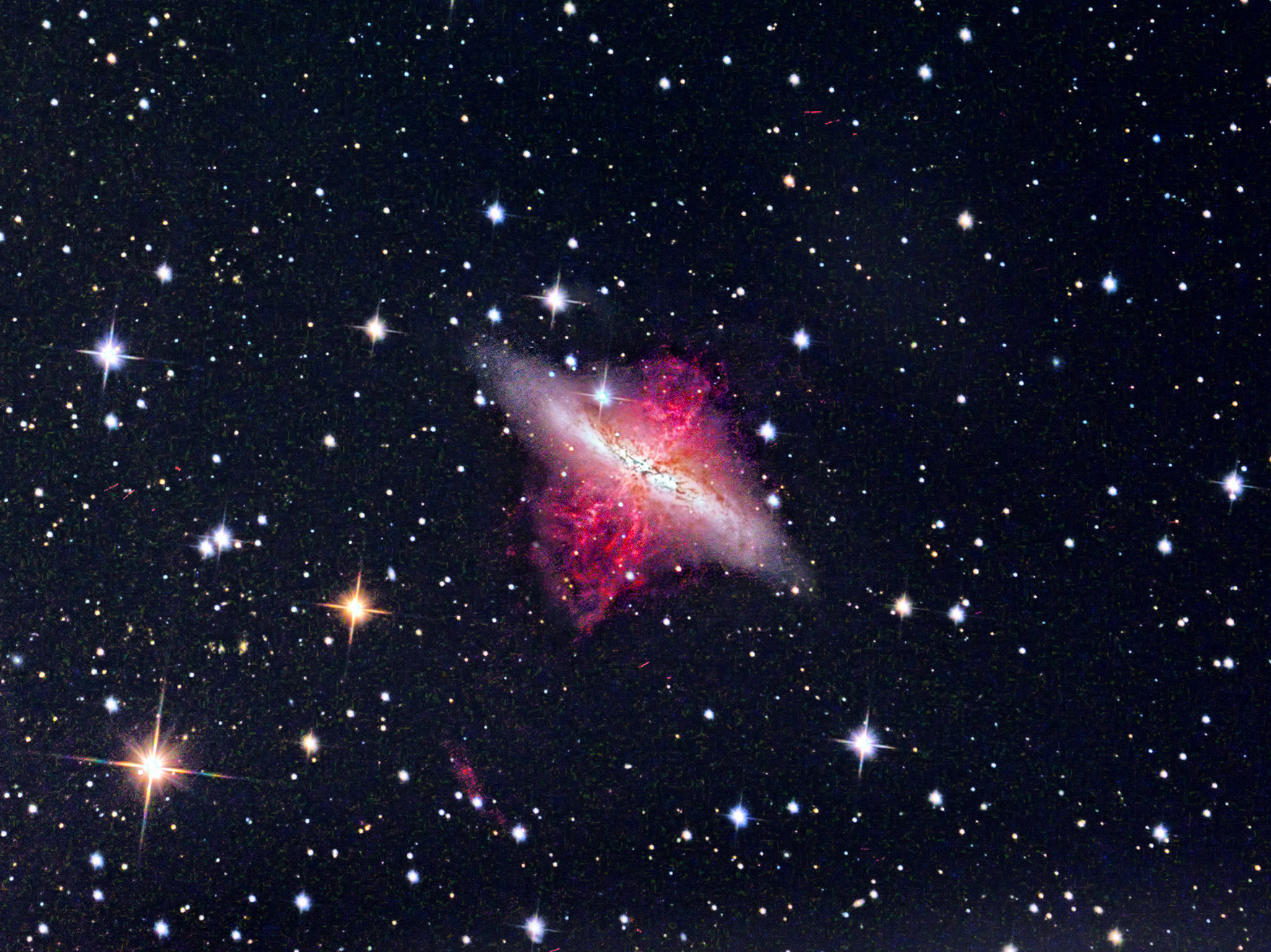 M82 version 1 (preliminary) This cropped photo of the M82 galaxy was taken by James Foster with a Sky-Watcher 10-inch f/4 Newtonian telescope. Messier 82 (M82), or the Cigar Galaxy, is an edge-on spiral undergoing a massive burst of star formation in its core. These stars are expelling violent winds that are blowing gas and dust out of the galaxy. The only hint of this are fountains of hot (red) hydrogen gas streaming out of its center. Shot by James Foster from Pinon Pines Estates, CA. file: prelimM81&M82_LUMHA125minColorZwoASI6200MC_reg2-mas1LM1x2rotcr1acrM82-db1.jpg Click here for full resolution photo Photographic Data telescope: Sky-Watcher Quattro 250P (10-inch f/4 Newtonian telescope with coma corrector) FL= 1,000 mm mount: iOptron Cem60 guiding off-axis imaging cameras: ZWO ASI6200MC-Pro color astrocamera ZWO ASI6200MM-Pro monochrome astrocamera exposures: 3 nm Hydrogen-alpha 588 min Lum 167 (mono camera) 125 min (color camera). Total esposure time: 880 min (14.6 hours) .photographic site: James Foster observatory at Pinon Pines Estates (Frazier Park) California (Bortle 4 at 5,500 ft elevstion) M81 and M8, version 1 (preliminary) 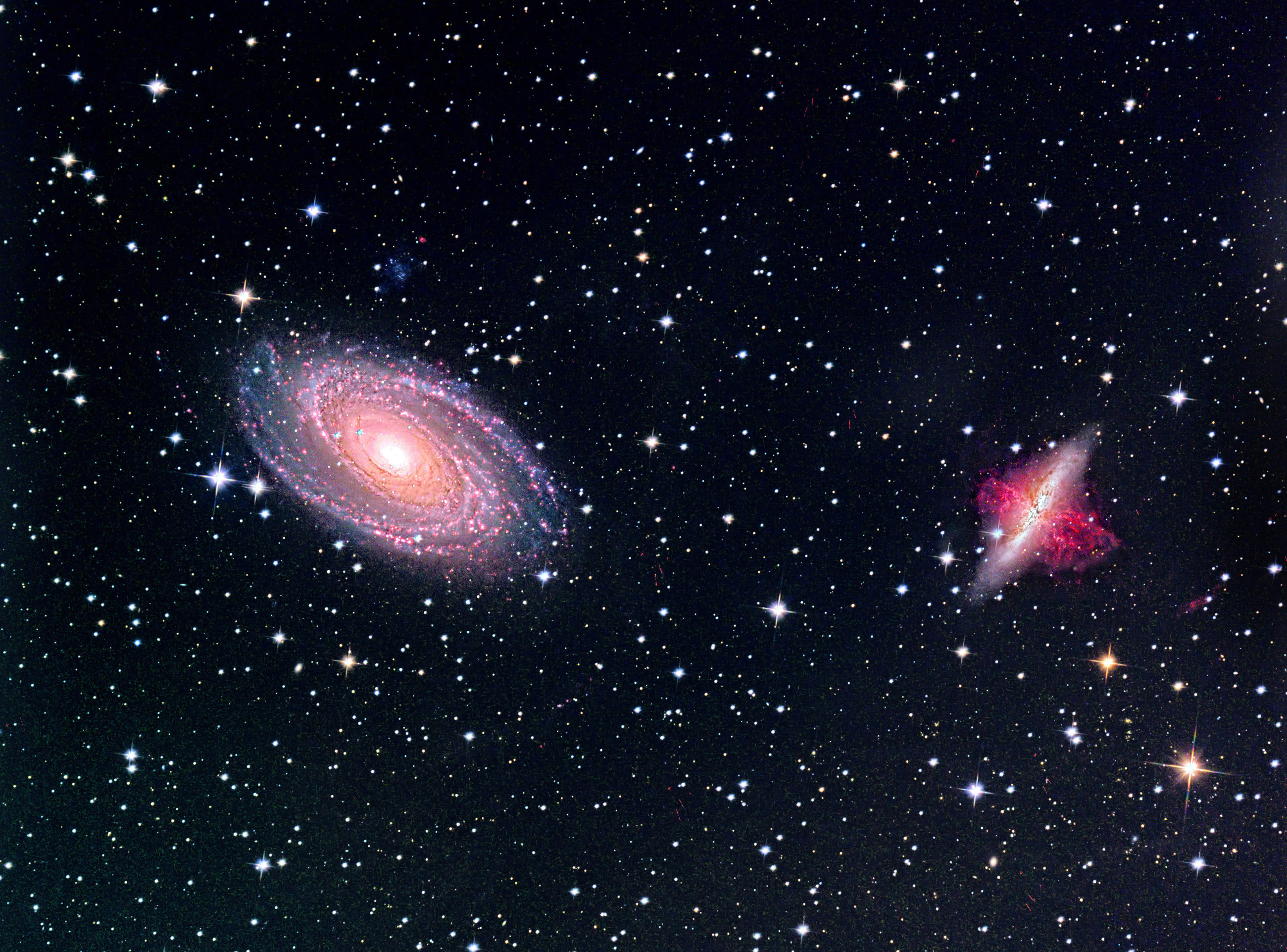 M81 and M82 galaxies version 1 (preliminary) Same settings as above file: prelimM81&M82_LUMHA125minColorZwoASI6200MC_reg2-mas1LM1x2rotcr1d-drssm.jpg Click here for full resolution photo  M81 and M82 galaxies version 1a (preliminary) Same settings as above file: prelimM81&M82_LUMHA125minColorZwoASI6200MC_reg2-mas1LM1x2rotcr1d-drs1sm.jpg Click here for full resolution photo **************************************** |
M81
and M82
galaxies in Ursa Major,
version 2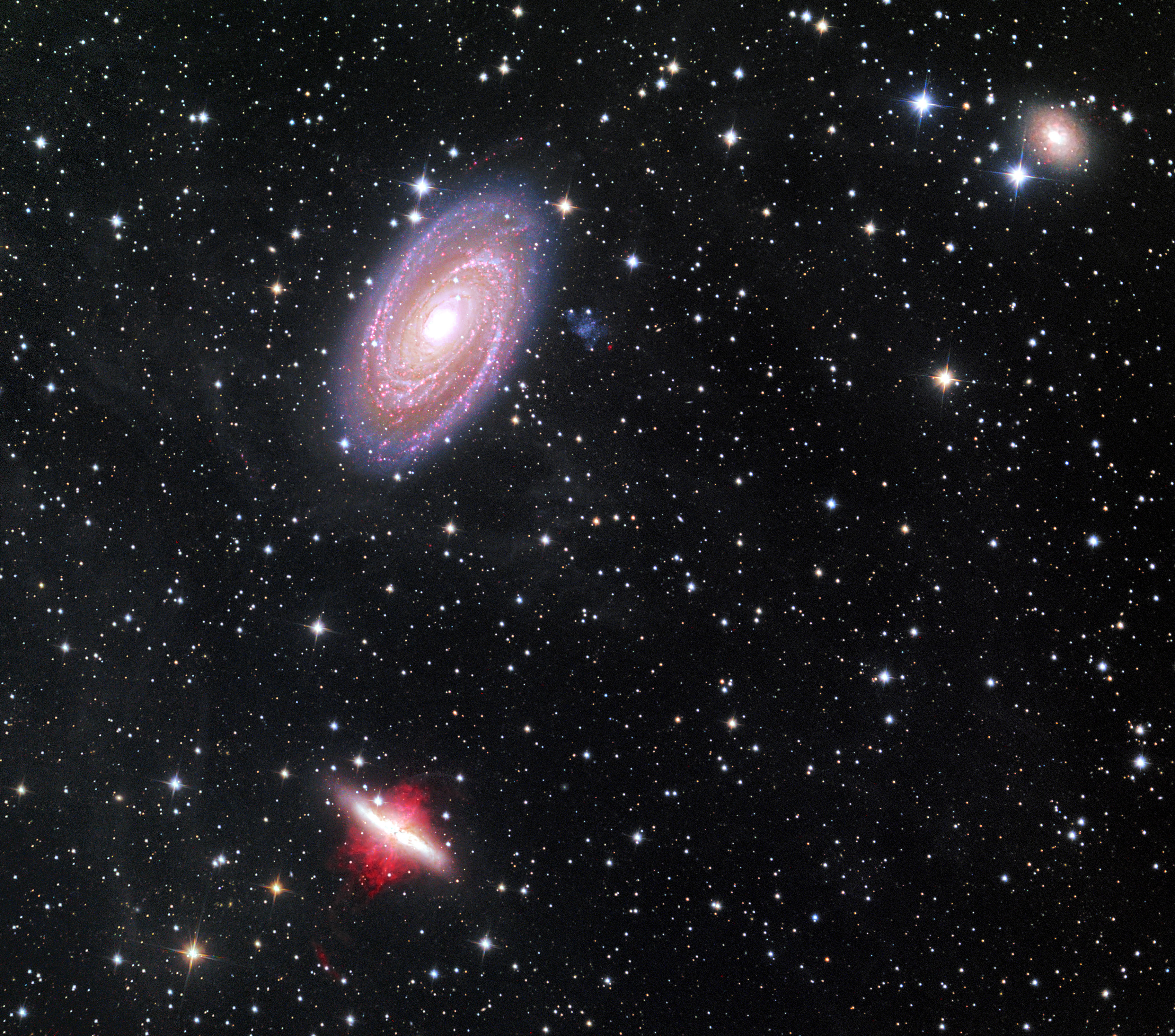 M81, M82, Holmberg IX dwarf galaxy and NGC3077 version 2 Four galaxies from bottom to the top going CCW, M82 (with Ha complex), M81(largest spiral), Holmberg IX (dwarf galaxy [blue splotch right of M81]), and NGC 3077 (upper right corner). Shot with the skywatcher 10-inch newtonian at f/4 in the iOptron CEM60 equatorial mount. Exposures made were 462min clear and 588min with 3nm Astrodon H-Alpha filter with the ZWO ASI6200MM and 125min color camera with the ZWO ASI6200MC camera. file: M81&M82-LMorig&M81br-flat-crrc1.jpg.jpg Click here for full resolution photo Photographic Data telescope: Sky-Watcher Quattro 250P (10-inch f/4 Newtonian telescope with coma corrector) FL= 1,000 mm mount: iOptron Cem60 guiding off-axis imaging cameras: ZWO ASI6200MC-Pro color astrocamera ZWO ASI6200MM-Pro monochrome astrocamera exposures: 3 nm Hydrogen-alpha: 588 min Lum: 462 min (mono camera) color camera: 125 min Total exposure time: 1,175 min (19.6 hours) .photographic site: James Foster observatory at Pinon Pines Estates (Frazier Park) California (Bortle 4 at 5,500 ft elevstion) Crop to M82 galaxy, version 2 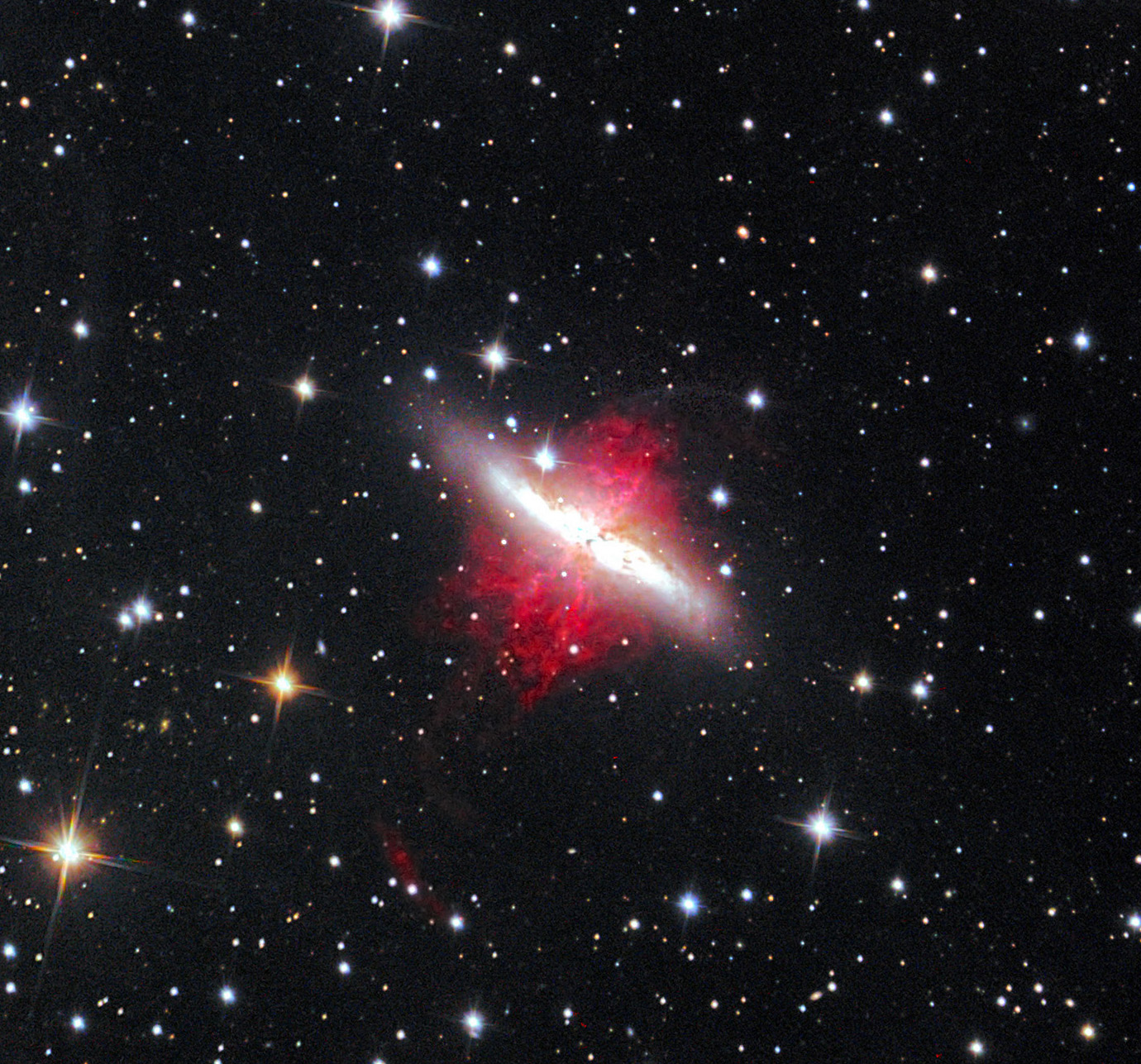 M82 cropped from photo above version 2 file: M81&M82-LMorig&M81br-flatrotcr3cr.jpg Click here for full resolution photo Cropped image of M81 & M82 with Integrated Flux Nebulae (IFN) in Ursa Major, version 2 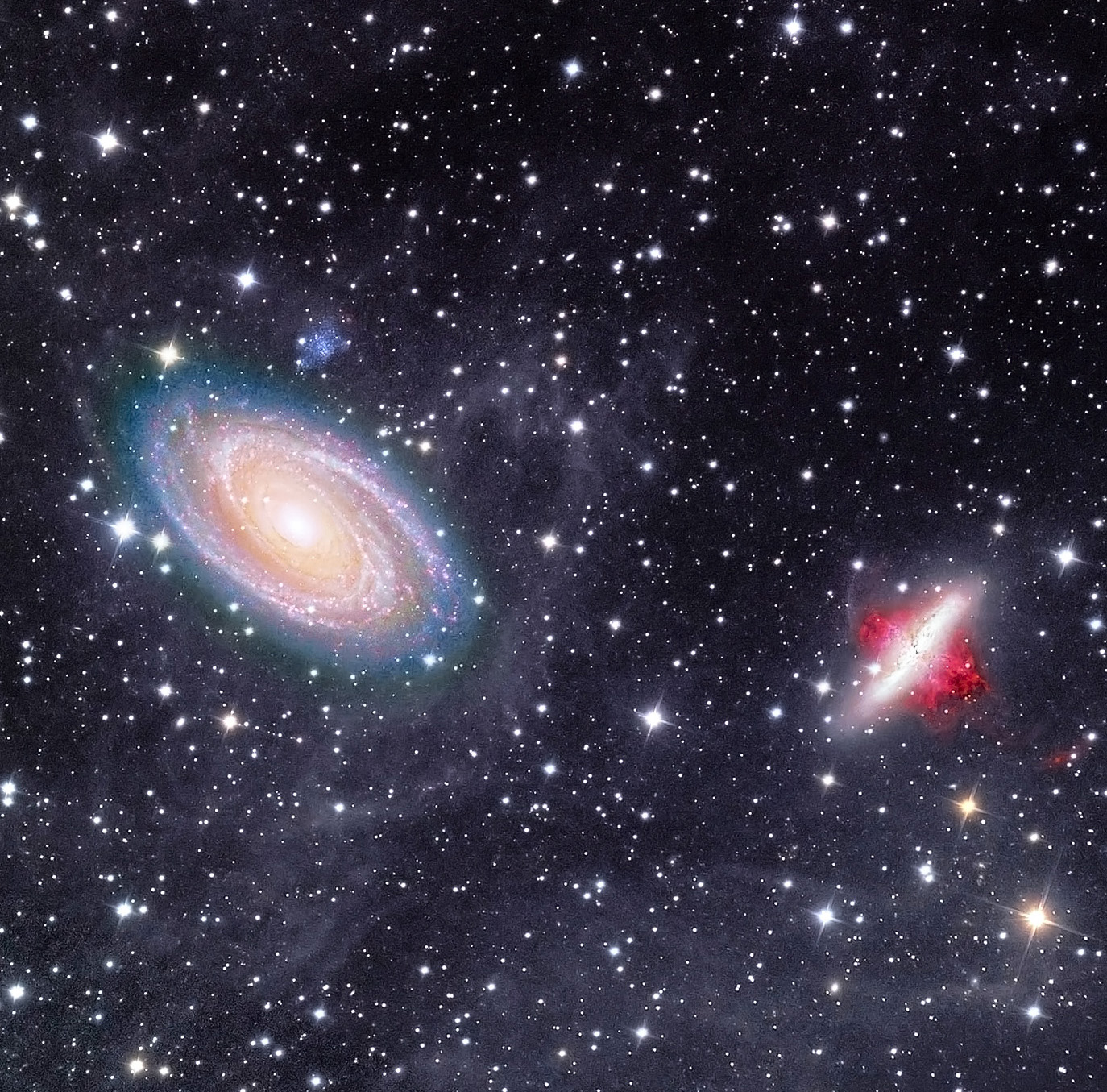 Cropped image of M81 & M82 with Integrated Flux Nebulae (IFN) in Ursa Major version 2 The milky nearly white clouds are integrated flux nebulae (IFN). They are a relatively recently identified astronomical phenomenon. In contrast to the typical known gaseous nebulae within the plane of the Milky Way galaxy, IFNs lie beyond the main body of the galaxy. The term was coined by Steve Mandel who defined them as "high galactic latitude nebula that are illuminated not by a single star (as most nebula in the plane of the Galaxy are) but by the energy from the integrated flux of all the stars in the Milky Way. file: M81&M82_125minColorZwoASI6200MC&MonoCOLOR_regMASKs2B&HAcrop2-MAS1bcrr.jpg Click here for full resolution photo |
|
|